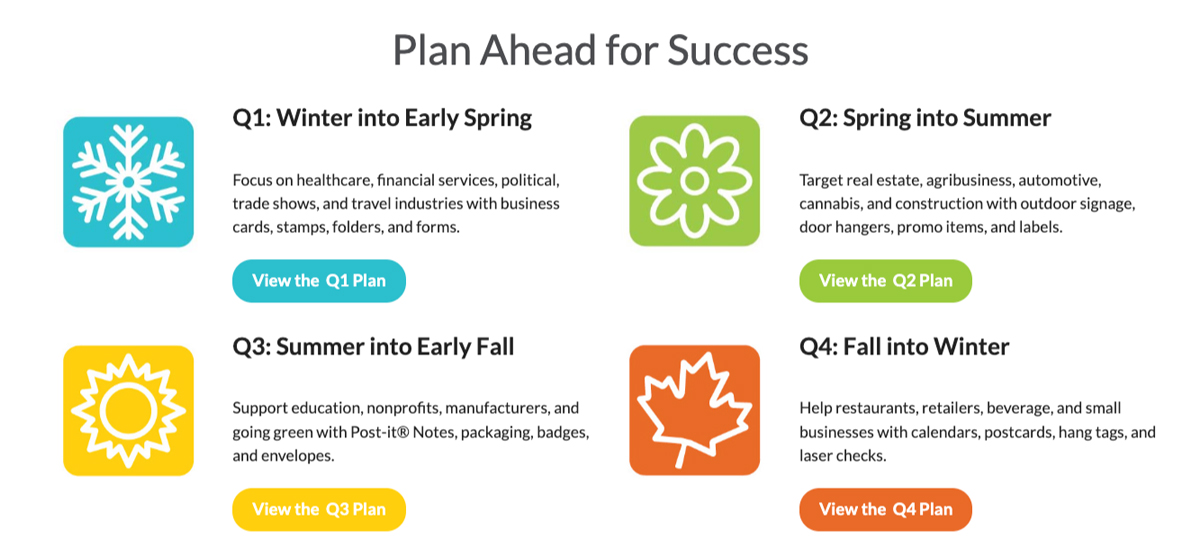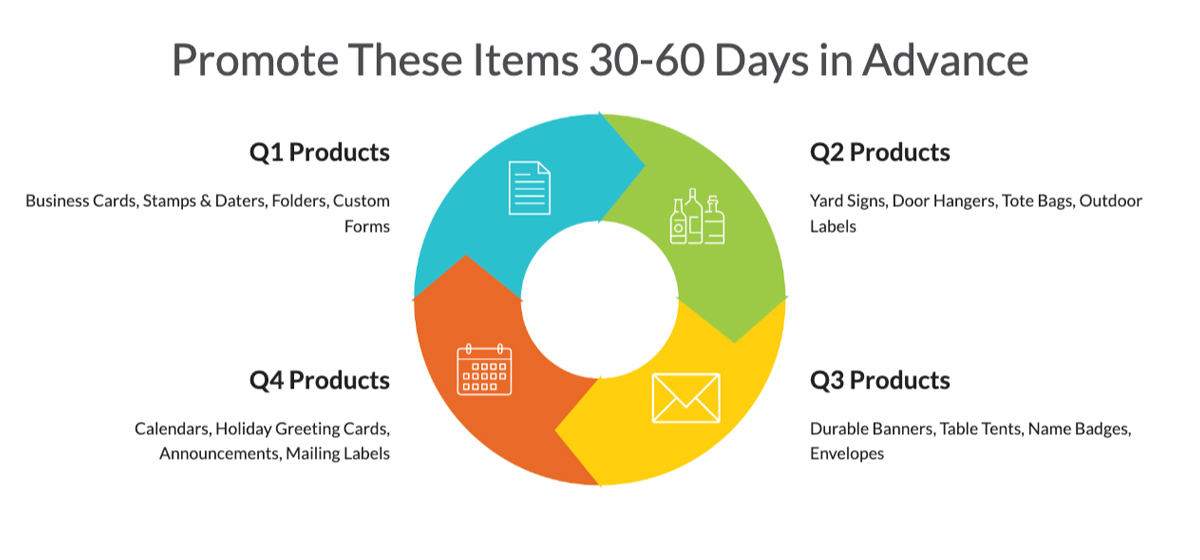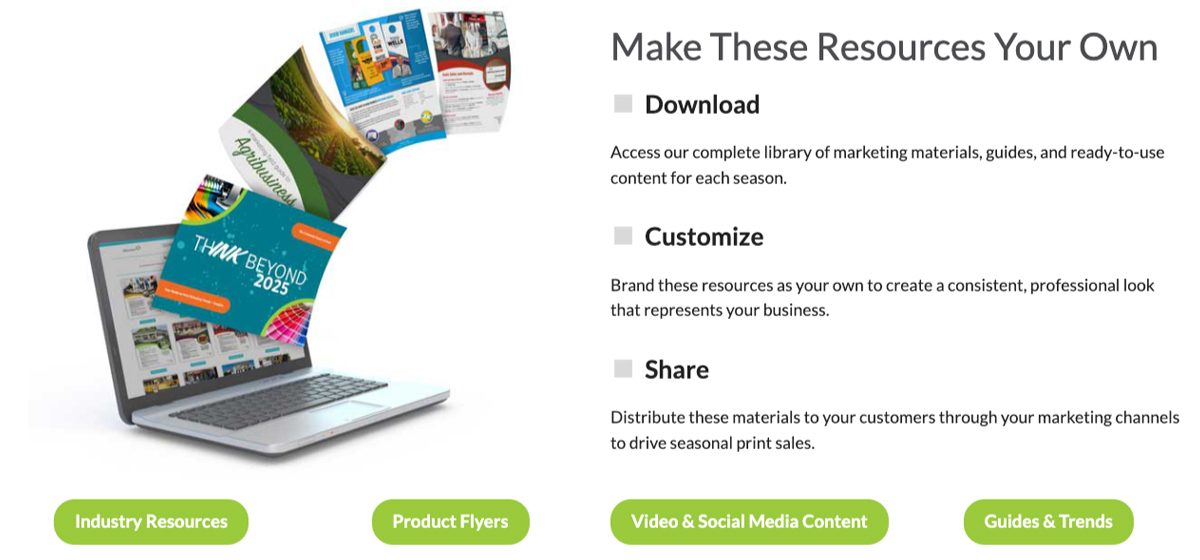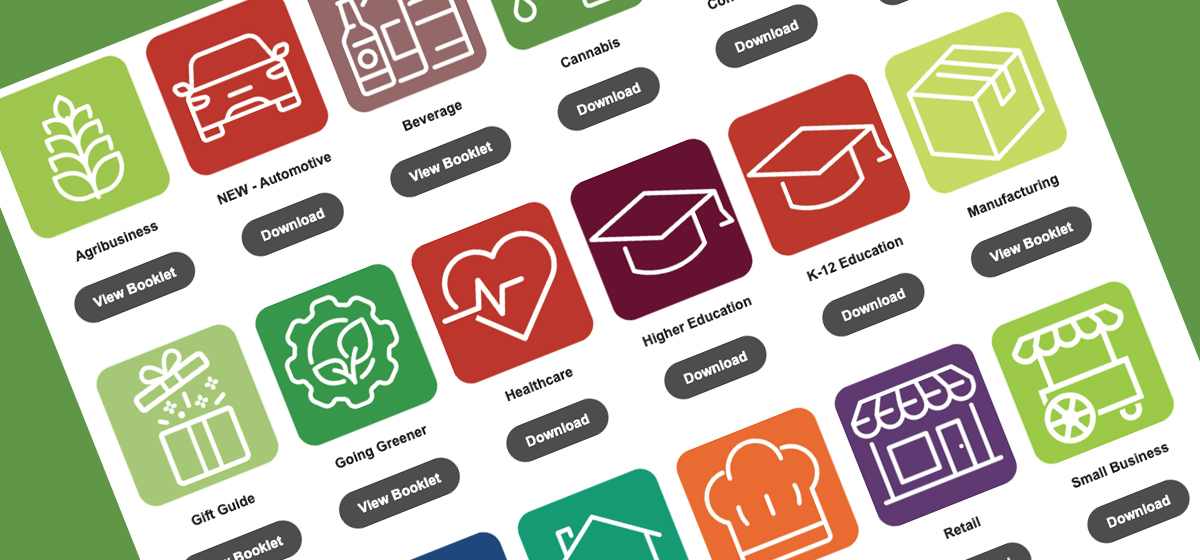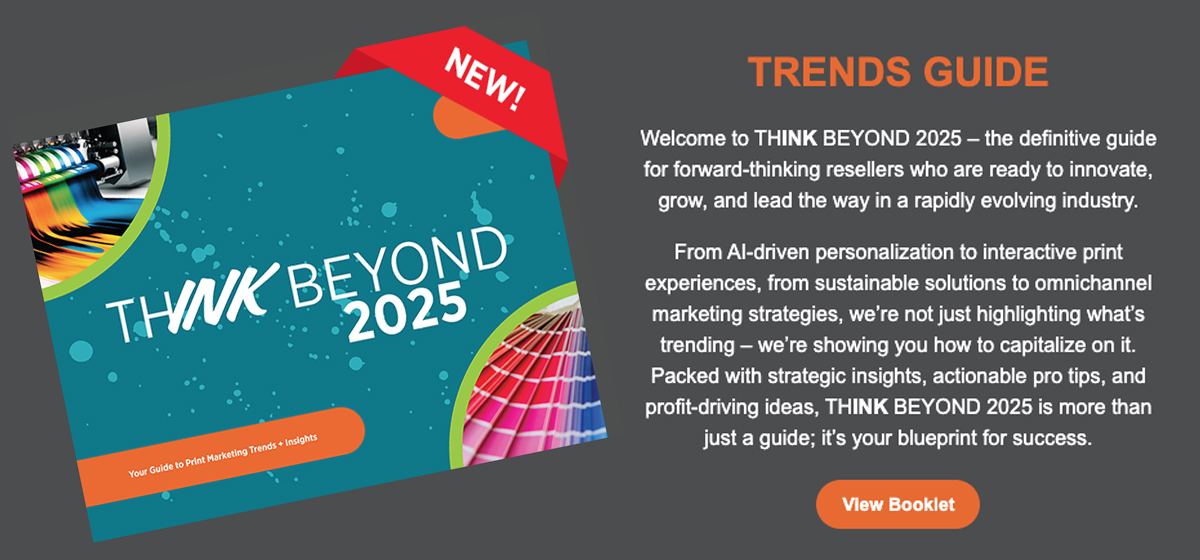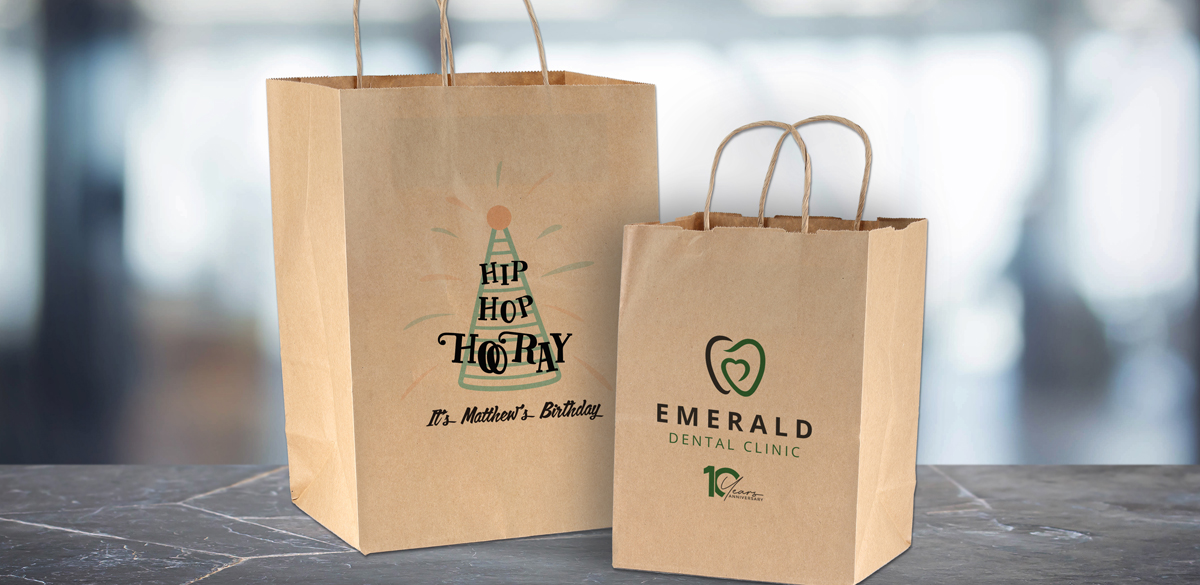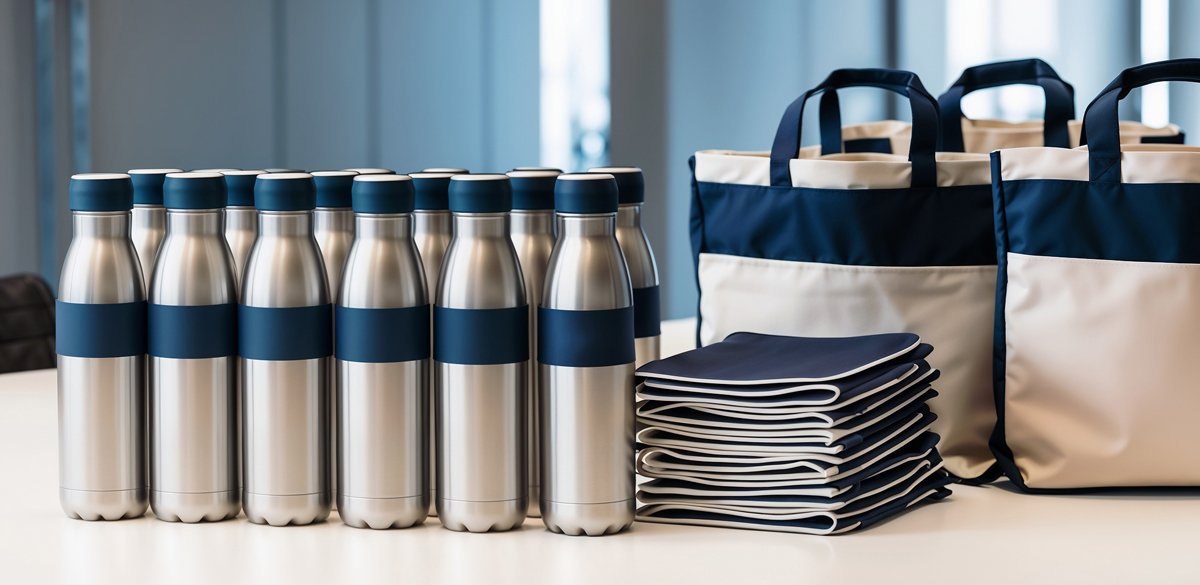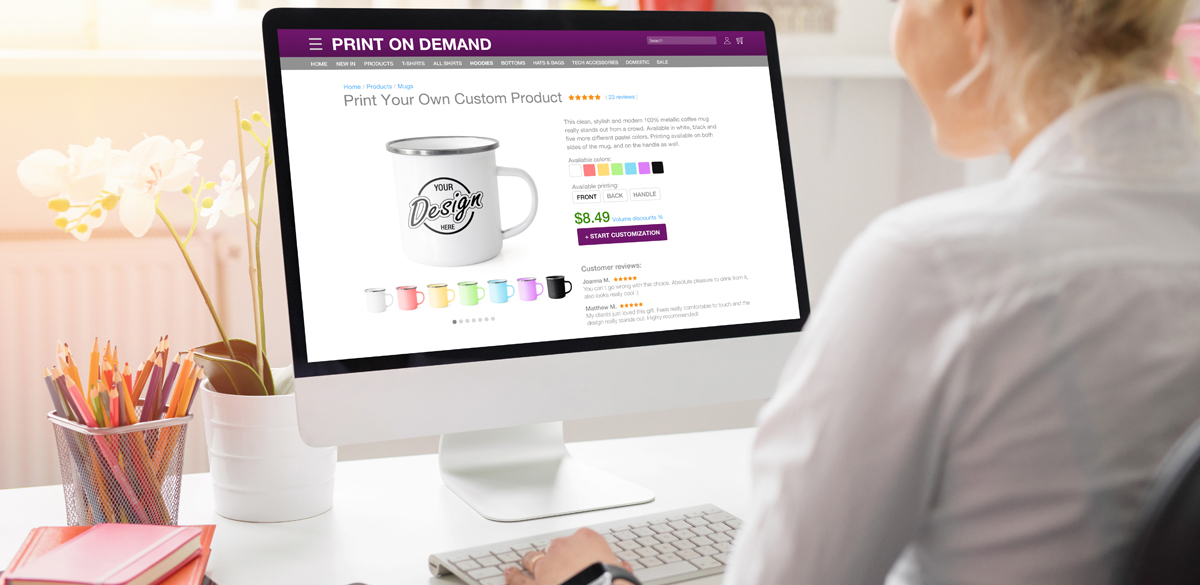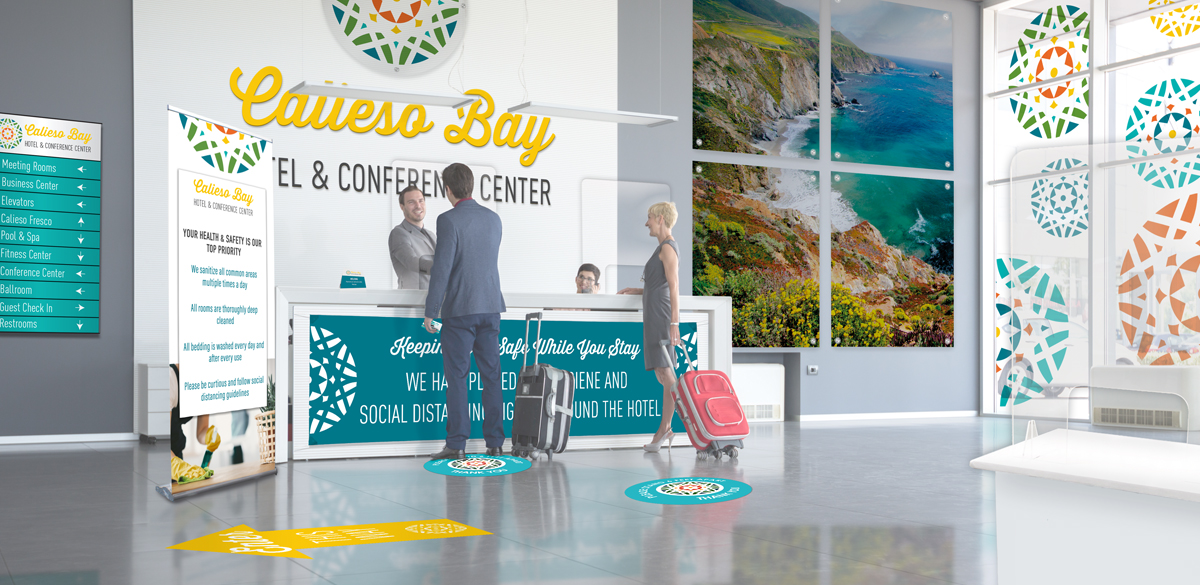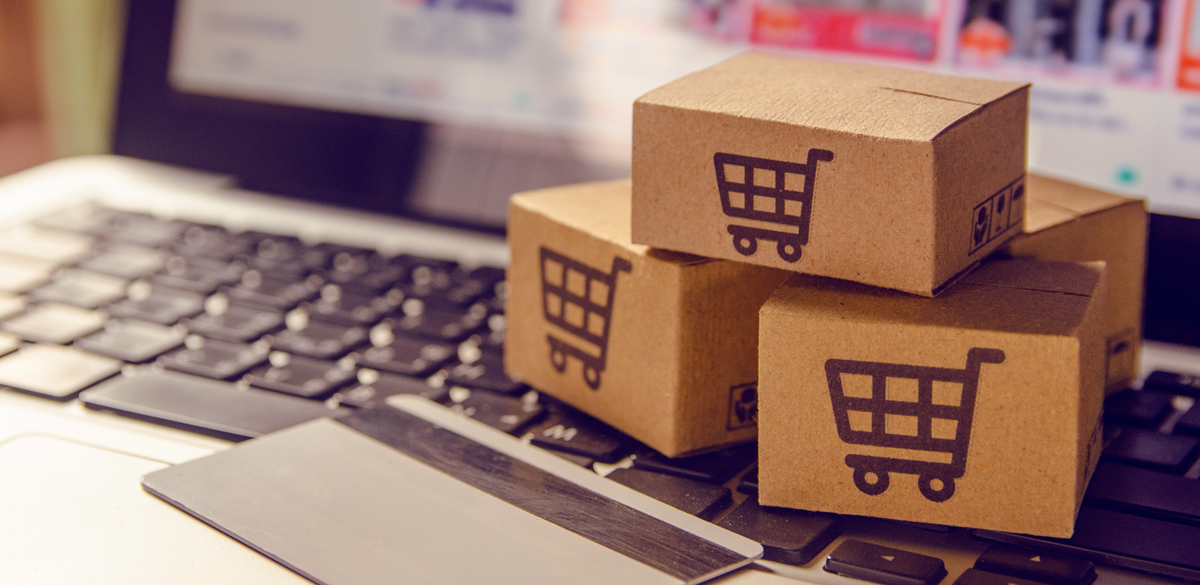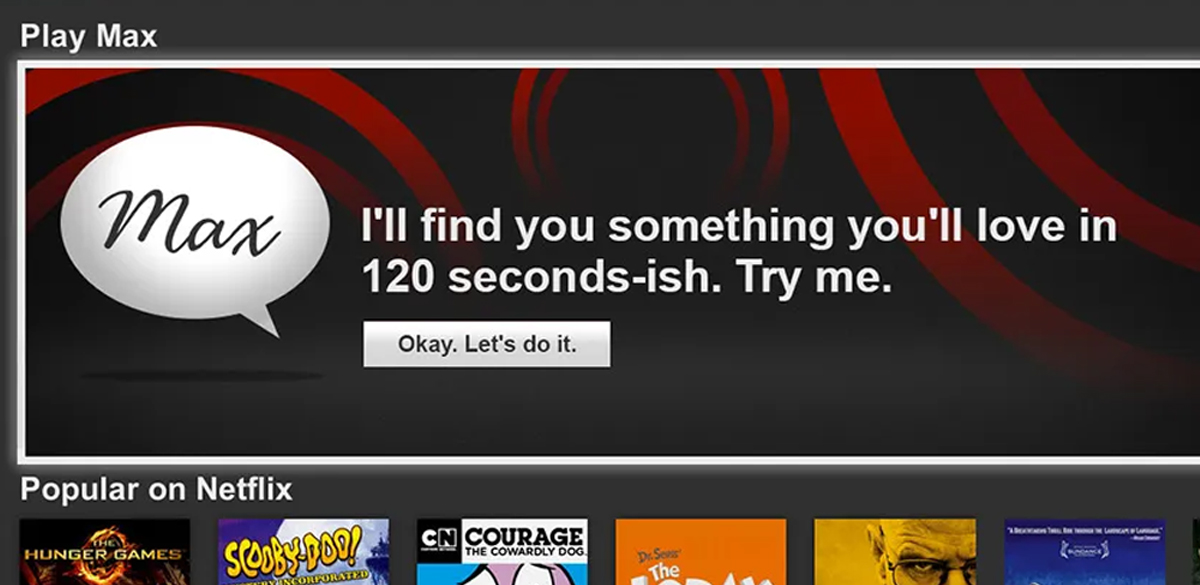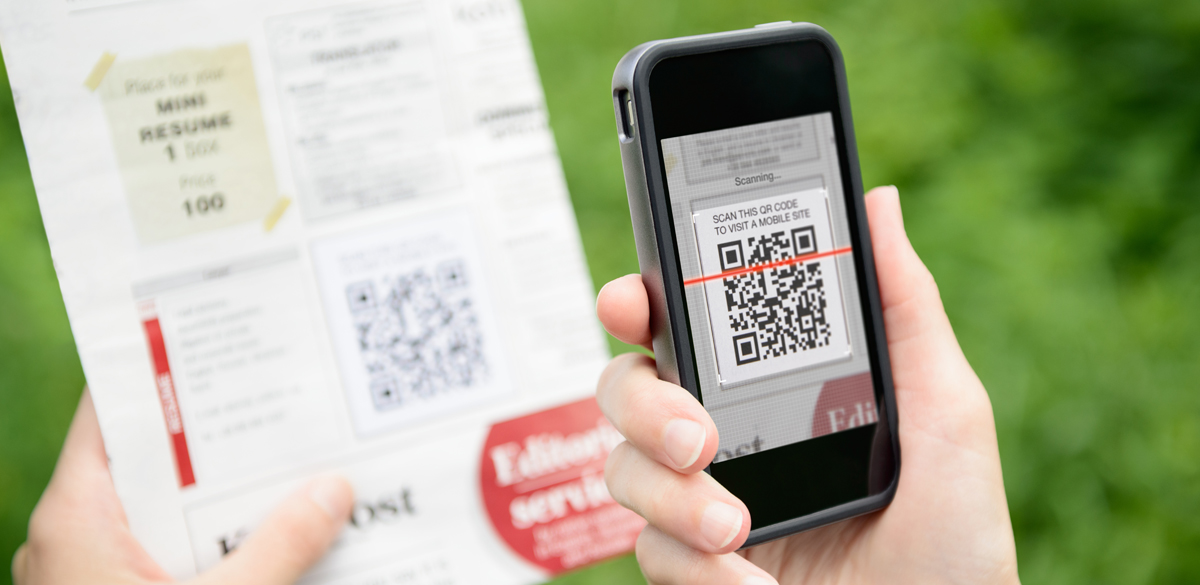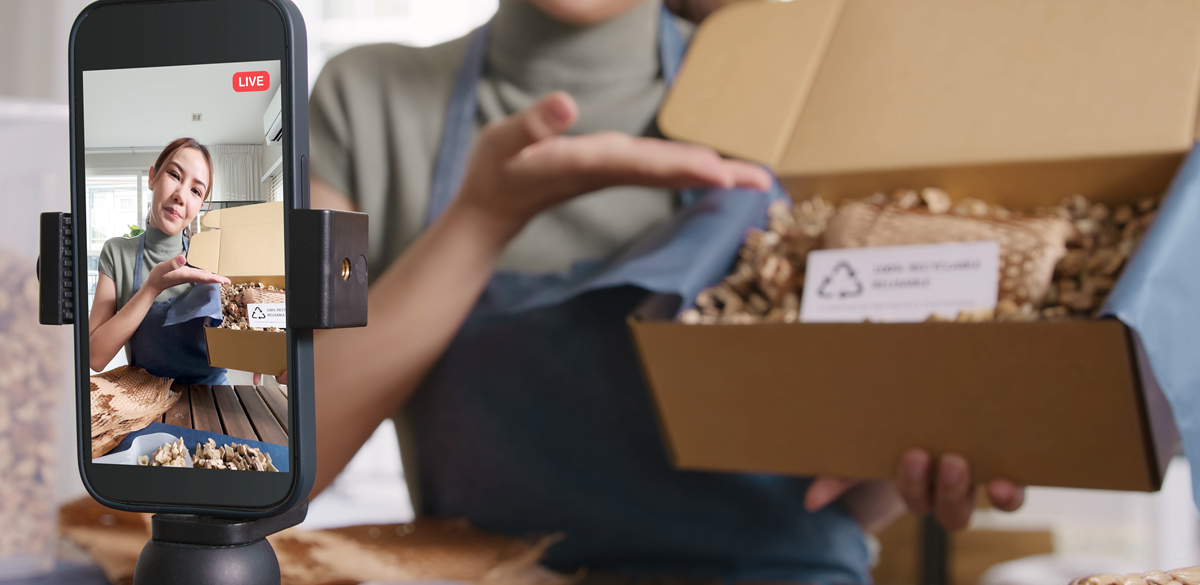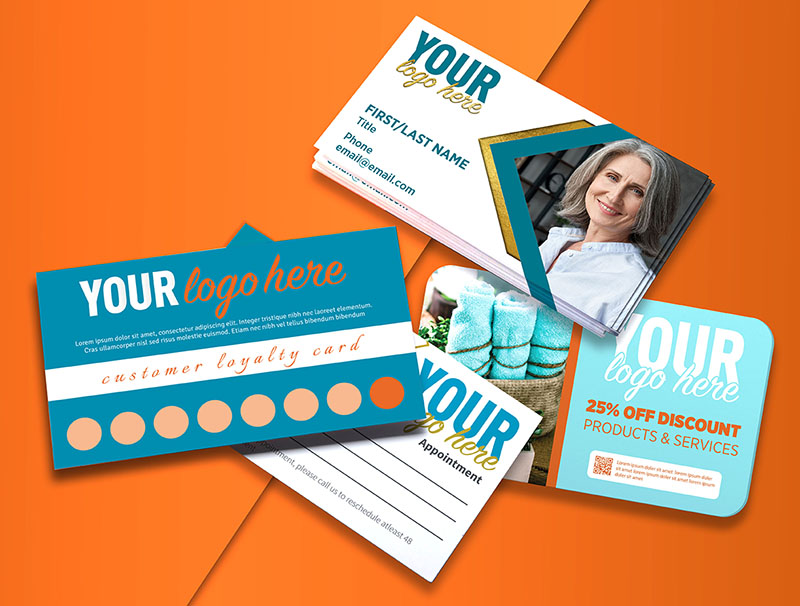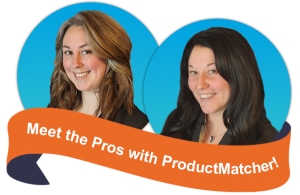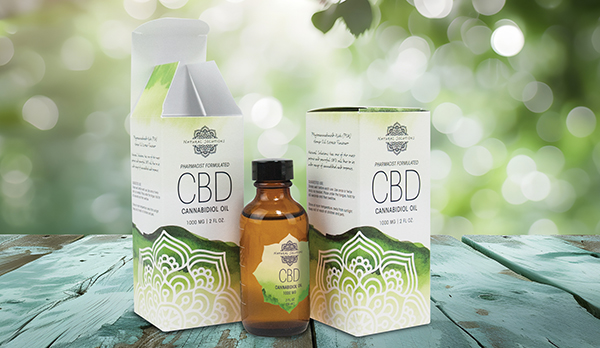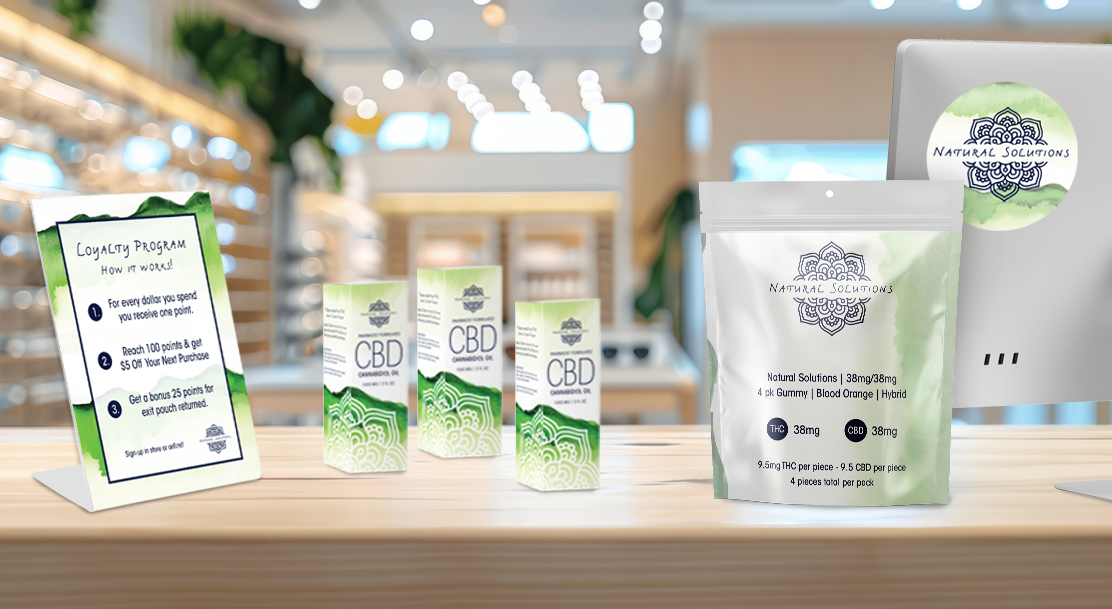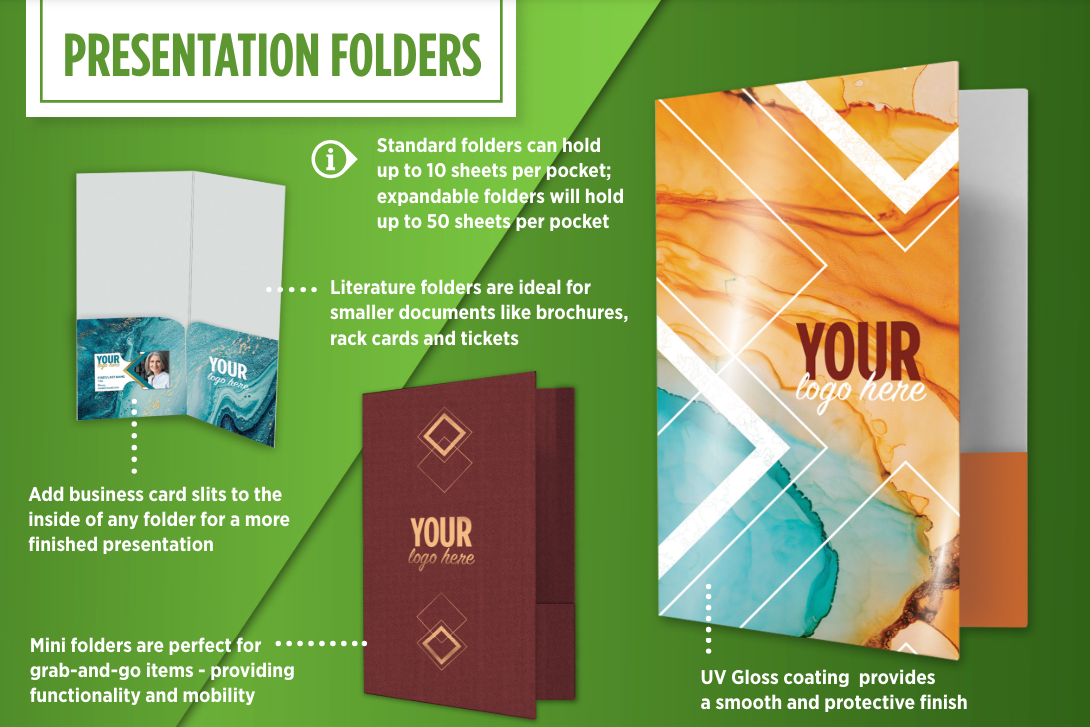Timely strategies. Turnkey tools. Trusted support.
If you’ve ever asked yourself “What print products do my customers need this time of year?” or “How can I promote seasonal print without starting from scratch?” then Navitor’s Seasonal Print Success Hub was built for you.
This quarterly content destination is designed to help custom print resellers stay ahead, plan smarter, and sell more throughout the year. Whether you’re kicking off Q1 strong or closing out Q4 with a holiday push, you’ll find everything you need to meet customers where they are – with the right print at the right time.
What is the Seasonal Print Success Hub?
It’s your one-stop marketing command center, packed with:
- Industry-specific flyers and guides that highlight the top-selling print products for key verticals like real estate, automotive, construction, agribusiness, cannabis, and more
- Quarter-by-quarter content, so you always know what’s trending and what to focus on
- Ready-to-use marketing materials, including product flyers, videos, social media posts, GIFs, and seasonal idea books
- Sales tools you can brand and share to promote your print capabilities and support customer outreach
Each section is curated with selling in mind – helping you respond to seasonal demand, uncover opportunities in specific industries, and guide your customers toward smart, timely purchases.
Why seasonal selling strategies matter
Successful print resellers know that timing is everything. From spring real estate booms to year-end holiday packaging and promo needs, seasonal buying patterns drive demand across industries. The resources in this hub are built to help you tap into that demand with clear value propositions and practical tools.
Looking for Q2 print sales strategies? The Spring into Summer: Q2 Opportunities section points you to what’s hot – like signage for construction crews, labels and co-op materials for ag, and promotional must-haves for cannabis brands heading into event season.
Want to get a jump on Q4 planning? You’ll find downloadable content that makes it easy to promote greeting cards, coasters, napkins, and other festive favorites that businesses stock up on each year.
Your complete library of reseller-ready content
Here’s what you’ll find inside:
Industry Resources
Organized A–Z, this library includes flyers and field guides for specific verticals. They’re packed with product ideas and positioning tips that help you speak your customers’ language – and bring them the print they actually need.
Product Flyers
Top-selling products, clearly explained. Each flyer gives you a deeper look at print products that sell all year long, complete with standout features, popular use cases, and practical sales tips.
Video & Social Media Content
Add energy to your outreach with short videos, scroll-stopping graphics, and downloadable GIFs. It’s all designed to help you stay visible online, even when you don’t have time to create from scratch.
Guides & Trends
From the Going Greener – Printing Cleaner guide to our quarterly Trends series and Holiday Idea Book, this section helps you spot what’s next – and stay ready with fresh ideas and insights.
Why visit the Hub regularly?
Because your customers’ needs change with the seasons. And this resource changes with them. With each new quarter, we refresh the content to highlight what’s timely, what’s trending, and what’s most likely to drive print sales right now.
Whether you’re looking to plan next month’s outreach, refresh your social media, or have more strategic conversations with key customers, the Seasonal Print Success Hub gives you the tools to do it all – fast.
Navitor: Your partner for print strategy, support, and success
At Navitor, we’re more than your print supplier – we’re your support system. The Seasonal Print Success Hub is just one of the many ways we help you go to market with confidence, backed by expert content and white-label resources you can use to grow your business.
Ready to explore?
Visit the Seasonal Print Success Hub now and bookmark it for every quarter – because seasonal selling doesn’t just happen. You make it happen. We’re here to help.

